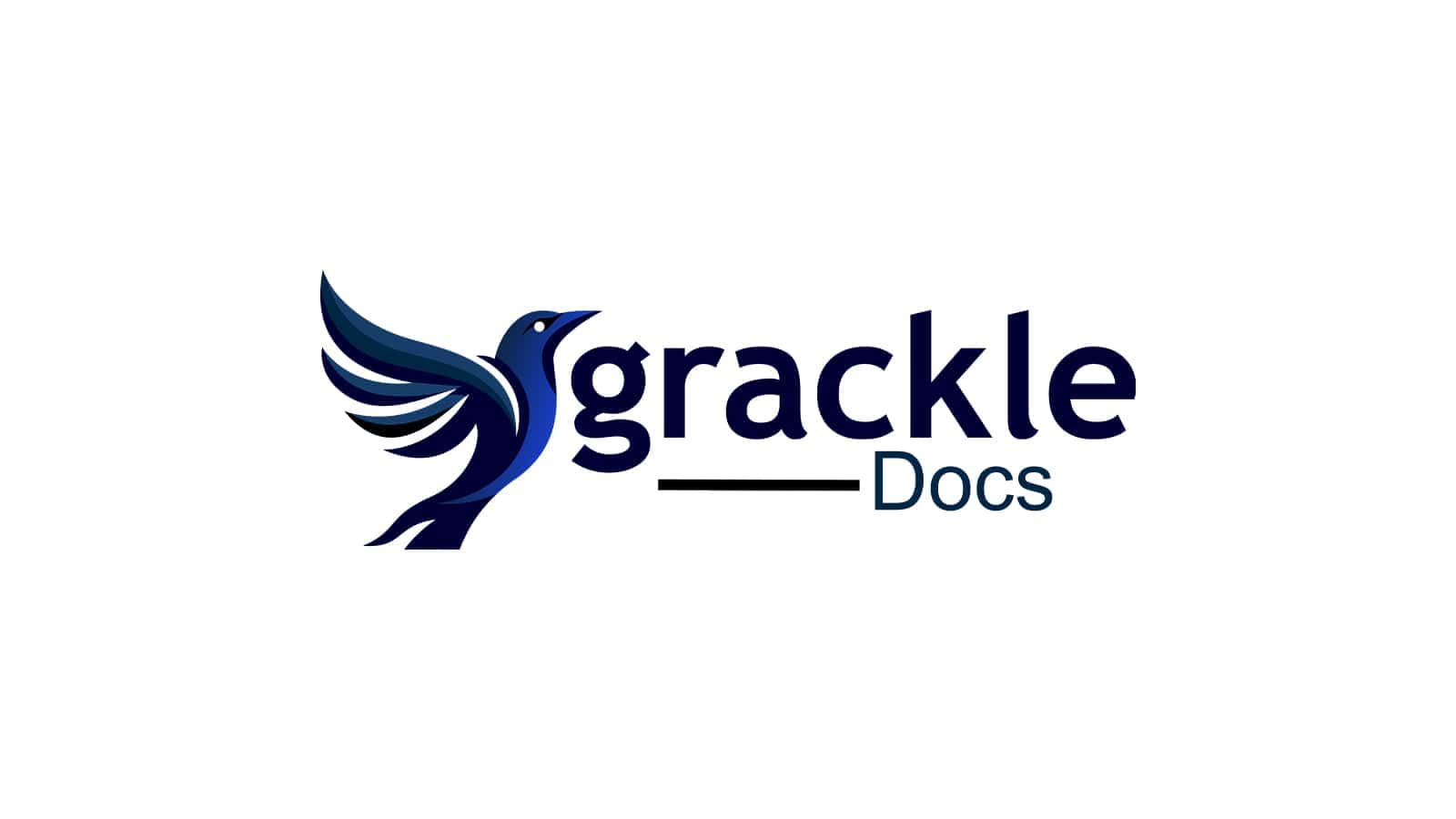GrackleDocs arbejder med digital tilgængelighed, og vi taler meget om PDF-sanering. Men hvad betyder det egentlig?
Hvad er PDF-oprydning?
PDF-afhjælpning er den proces, der sikrer, at PDF-dokumenter er tilgængelige for mennesker med handicap, især dem, der bruger hjælpemidler til at få adgang til digitalt indhold. PDF-afhjælpning indebærer gennemgang af PDF-dokumentet for at identificere tilgængelighedsproblemer og foretage de nødvendige ændringer for at forbedre dets tilgængelighed.
Nogle almindelige tilgængelighedsproblemer, der kræver afhjælpning i PDF'er, omfatter:
- Mangel på alternativ tekst til billeder: Billeder i et PDF-dokument har brug for alternative tekstbeskrivelser der giver en tekstbaseret beskrivelse af det visuelle indhold, så folk, der bruger Skærmlæsere kan forstå, hvad billedet formidler.
- Forkert læserækkefølge: PDF-dokumenter skal struktureres i en logisk læserækkefølge, så personer, der bruger hjælpemidler, kan forstå indholdet i den rigtige rækkefølge.
- Utilgængelige formularer: Formularer i PDF-dokumenter skal være designet til at være tilgængelige for hjælpemidler, så folk, der bruger hjælpemidler, kan udfylde dem.
- Utilgængelige tabeller: Tabeller i PDF-dokumenter skal være designet til at være tilgængelige for hjælpemidler, så folk, der bruger hjælpemidler, kan forstå indholdet.
PDF-afhjælpning kan ske ved hjælp af forskellige værktøjer og teknikker, herunder manuel afhjælpning, automatiserede værktøjer og tredjepartstjenester. Målet med PDF-remediation er at sikre, at PDF-dokumentet er tilgængeligt for alle, uanset deres evner, så de kan få fuld adgang til og forstå indholdet i dokumentet.
Få en gratis, uforpligtende konsultation om PDF-sanering fra verdens førende PDF-tilgængelighedstjeneste ved at udfyld formularen her.

Hvad vil det sige at rette op på et dokument?
At afhjælpe et dokument betyder at forbedre dens tilgængelighed og brugervenlighed for mennesker med handicap. Afhjælpning indebærer, at man identificerer og løser tilgængelighedsbarrierer i dokumentet, så personer med handicap kan få adgang til og bruge indholdet i dokumentet.
Afhjælpning kan involvere forskellige teknikker og værktøjer, afhængigt af dokumenttypen og de tilgængelighedsbarrierer, der skal løses. For at afhjælpe et PDF-dokument kan det f.eks. være nødvendigt at tilføje alternative tekstbeskrivelser til billeder, omstrukturere læserækkefølgen og sikre, at tabeller og formularer er tilgængelige for hjælpemidler.
Afhjælpningsprocessen omfatter typisk følgende trin:
- Evaluering: Gennemgå dokumentet for at identificere tilgængelighedsbarrierer og afgøre, hvilke afhjælpningsteknikker der er nødvendige.
- Planlægning: Udvikl en afhjælpningsplan, der beskriver de teknikker og værktøjer, der vil blive brugt til at løse tilgængelighedsbarriererne.
- Afhjælpning: Brug de planlagte teknikker og værktøjer til at rette op på dokumentet og sikre, at det er tilgængeligt for personer med handicap.
- Testning: Test det udbedrede dokument for at sikre, at det er fuldt tilgængeligt og brugbart for personer med handicap.
- Bekræftelse: Bekræft tilgængeligheden af det udbedrede dokument ved hjælp af testværktøjer som AbleDocs’ ADScan og hjælpemidler.
Ved at afhjælpe et dokument kan virksomheder og organisationer sikre, at deres indhold er tilgængeligt for alle, inklusive mennesker med handicap. Det fremmer inklusion, mangfoldighed og retfærdighed og sikrer, at ingen udelukkes fra at få adgang til vigtige oplysninger og tjenester.
Få en gratis, uforpligtende konsultation om PDF-sanering fra verdens førende PDF-tilgængelighedstjeneste ved at udfyld formularen her.

Hvordan løser jeg problemer med PDF-tilgængelighed?
Her er nogle trin til at løse problemet Problemer med PDF-tilgængelighed:
- Identificer tilgængelighedsproblemerne: Det første skridt til at løse problemer med PDF-tilgængelighed er at identificere de specifikke tilgængelighedsbarrierer, der skal løses. Det kan gøres ved at bruge værktøjer til evaluering af tilgængelighed, f.eks. Adobe Acrobats Accessibility Checker eller tredjepartsværktøjer til test af tilgængelighed.
- Adressér billeder og grafik: Sørg for, at alle billeder og grafikker i PDF'en har alternative tekstbeskrivelser, der nøjagtigt beskriver billedets indhold for personer, der bruge skærmlæsere.
- Adressens læserækkefølge: Sørg for, at PDF-indholdets læserækkefølge er logisk og følger en meningsfuld rækkefølge. Det kan gøres ved at bruge læserækkefølgeværktøjet i Adobe Acrobat.
- Adressetabeller: Sørg for, at tabeller i PDF'en er korrekt tagget og har passende overskriftsceller, så folk, der bruger hjælpemidler, kan forstå indholdet af tabellen.
- Adresseformularer: Sørg for, at alle formularfelter i PDF'en er korrekt tagget og har passende etiketter og instruktioner, så folk, der bruger hjælpemidler, kan udfylde formularen.
- Brug tydelige og læsbare skrifttyper: Brug skrifttyper, der er lette at læse og forstå, og undgå at bruge smarte skrifttyper eller skrifttyper, der er svære at læse.
- Tilføj bogmærker og links: Tilføj bogmærker og links til PDF-dokumentet for at gøre det lettere for brugerne at navigere i dokumentet.
- Test PDF'en: Test PDF'en ved hjælp af hjælpemidler som skærmlæsere og talegenkendelsessoftware for at sikre, at tilgængelighedsproblemerne er løst, og at dokumentet er fuldt tilgængeligt.
Få en gratis, uforpligtende konsultation om PDF-sanering fra verdens førende PDF-tilgængelighedstjeneste ved at udfyld formularen her.
Hvordan kan jeg forbedre min PDF-tilgængelighed?
Lad os se på nogle af de almindelige elementer i afhjælpningsløsninger i en PDF, og hvorfor de er vigtige.
Overskrifter
Som navigationsværktøjer hjælper overskrifter (H1, H2, H3 osv.) med at organisere dokumenter og informere læserne om, hvad de indeholder.
Overskrifter hjælper med at gøre indholdet mere forståeligt for personer med hjælpemidler ved at opdele det i letfordøjelige afsnit og skabe navigationsmæssige pejlemærker i dokumentet. Desuden kan personer, der bruger hjælpemidler, vælge kun at læse overskrifterne i et dokument, så de ved, hvad dokumentet indeholder.
En PDF uden overskrifter ville få en hjælpemiddelbruger til at læse hver eneste linje i dokumentet for at finde det, han eller hun leder efter.
Links
Når du opretter en PDF, har du måske tilføjet links, så dine brugere kan få mere at vide om et bestemt emne. Disse links skal tagges som links, når du retter dem.
Hvis du ikke angiver, hvor et link fører hen, er slutbrugerne måske ikke klar over, at de forlader dit dokument, eller hvor de ender.
Lister
Lister skal tagges på en bestemt måde for at undgå, at hvert element ser ud til at være en masse uafhængige ord uden nogen sammenhæng.
Når en liste er tagget korrekt, vil den informere slutbrugerens hjælpemiddel om antallet af elementer på listen, og hvor de befinder sig på listen.
Borde
Generelt kan tabeller være udfordrende at forstå med hjælpemidler. Der skal henvises til hver celle med dens række og kolonne, men der kan være behov for yderligere oplysninger for at forstå dataene korrekt. Ting som kolonne- og rækkeoverskrifter skal identificeres for at gøre det lettere at navigere i dataenes rækkefølge.
Billeder
For Hjælpemiddelteknologi at læse billeder, kræver de alternativ tekst (alt-tekst).
Den alternative tekst formidler et billedes "hvorfor" i forhold til indholdet i et dokument. Det er i bund og grund billedet, der beskrives med ord, som læses højt af hjælpemidler som skærmlæsere og indekseres af søgemaskiner.
Et billede, der mangler alt-tekst i en PDF, læses som et billede eller en grafik, men der gives ingen yderligere kontekst eller information.
Hvis billedet blot er dekorativt, kræver det ikke alt-tekst, men det skal i stedet placeres i artefakten dokumentets tags. Disse ting kan omfatte, men er ikke begrænset til:
- Baggrundsbilleder
- Kasser
- Gentagne logoer
- Designelementer som linjer, cirkler og firkanter
Læserækkefølge
Når det drejer sig om læserækkefølge, er det, hvad det hedder - du angiver den rækkefølge, som elementerne i dokumentet skal læses i. Når din PDF ikke har en identificeret læserækkefølge, vil hjælpemidler ikke forstå, hvordan de skal navigere ned ad siden, hvilket fører til en rodet og inkonsekvent slutbrugeroplevelse.
Selv om dit dokument har en læserækkefølge, er det vigtigt at kontrollere, at det læses på samme måde, som du vil have det som indholdsskaber.
Er du klar til at afhjælpe dine dokumenter? Få en gratis, uforpligtende konsultation om PDF-oprydning fra verdens førende PDF-tilgængelighedstjeneste ved at udfyld formularen her.


